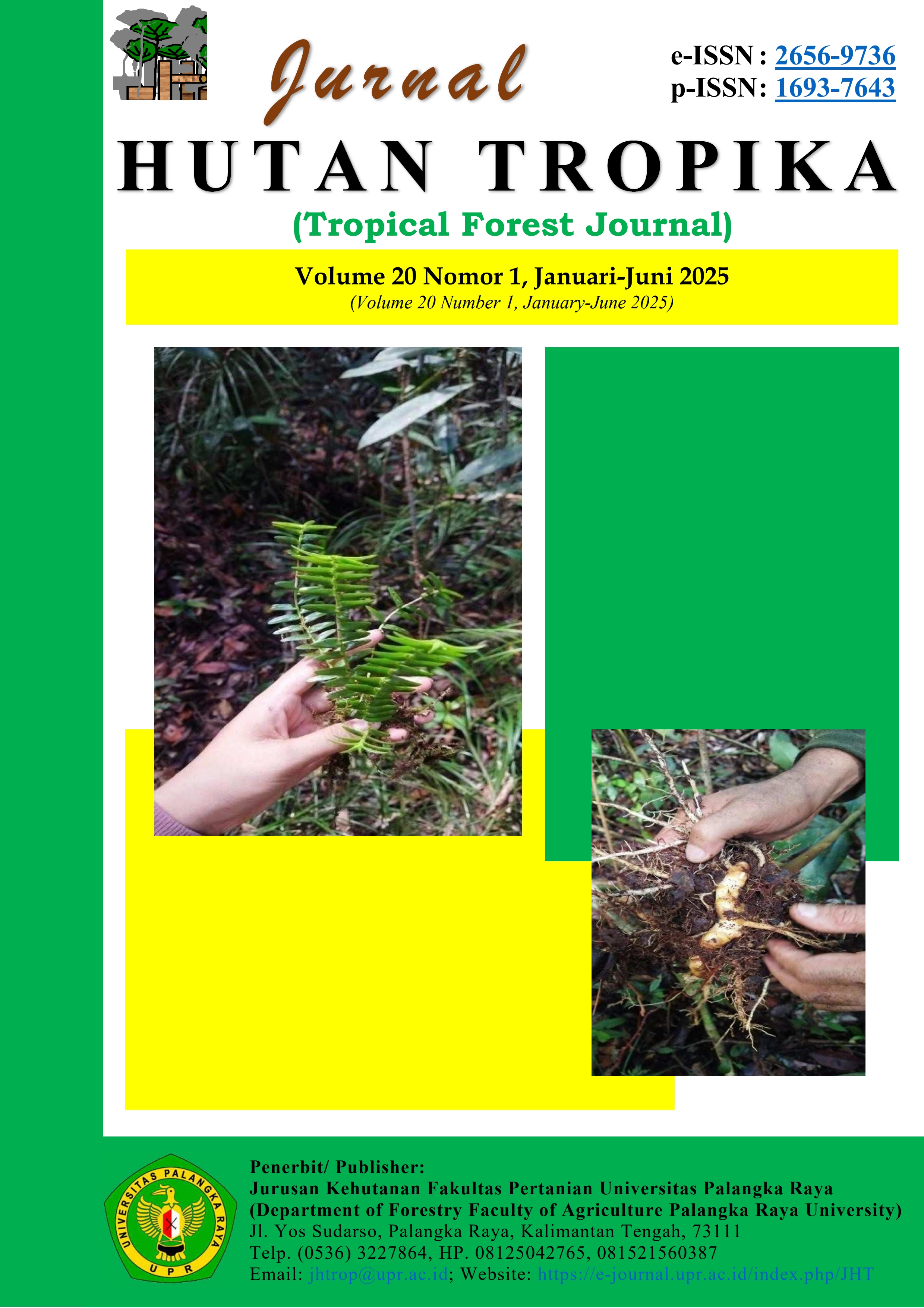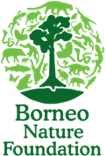Komposisi Vegetasi, Keanekaragaman Jenis, Dan Pola Dispersi Tumbuhan Langka Pada Kawasan Laboratorium Alam Lahan Gambut Universitas Palangka Raya
The composition of vegetation, species diversity, and dispersion patterns of rare plants in the Natural Peatland Laboratory Area of the University of Palangka Raya
DOI:
https://doi.org/10.36873/jht.v20i1.20219Kata Kunci:
keanekaragaman jenis, tumbuhan langka, pola dispersi, laboratorium alamAbstrak
Penelitian ini bertujuan untuk mendiskripsikan dan menganalisis komposisi jenis tumbuhan, keanekaragaman jenis, dan pola dispersi tumbuhan langka khususnya jenis tumbuhan dengan kategori sangat terancam punah (kritis) di LALG Universitas Palangka Raya. Pengumpulan data vegetasi dilakukan dengan teknik plot kuadrat, yang penempatan plotnya dilakukan secara purposive systematic sampling. Data yang diperoleh dalam plot penelitian dianalisis dengan menggunakan Microshoft Excel dalam konteks Nilai Penting Jenis (NPJ), indeks dominansi jenis, indeks diversitas, indeks kemerataan, dan indeks dispersi. Hasil penelitian ditemukan 47 jenis tumbuhan (jumlah keseluruhan tumbuhan tingkat semai, pancang, tiang, dan pohon) yang dikategorikan ke dalam 38 marga, dan 27 suku. Dua diantara jenis yang ditemukan merupakan tumbuhan langka dengan kategori sangat terancam punah atau kritis yakni ramin (Gonystylus bancanus) dan nyatoh (Palaquium bintuluense). Nyatoh (Palaquium bintuluense), jambu-jambu (Eugenia spp.), dan mangkinang (Elaeocarpus stipularis BI.) hampir selalu berada dilima peringkat jenis dominan dari tingkat semai sampai tingkat pohon pada berbagai level ketebalan gambut, namun tidak terdapat pemusatan dominansi spesies di plot tersebut. Mayoritas nilai indeks diversitas jenis (Shannon-Wiener) di plot penelitian tergolong tinggi (H’>3), yang mengindikasikan kondisi ekosistem hutan pada lokasi tersebut relatif stabil, indeks kemerataan jenis pada semua komunitas tumbuhan dan level ketebalan gambut termasuk kategori tinggi/kelimpahan hampir merata (E = 0,76 – 0,95). Pola dispersi populasi tumbuhan langka dengan kategori kritis untuk jenis Gonystylus bancanus (Mig.) dan Palquium bintulense pada berbagai level ketebalan gambut mengelompok. Jika menurut tingkat pertumbuhannya, populasi Palquium bintulense seluruhnya memiliki pola mengelompok, sedangkan Gonystylus bancanus (Mig.) hanya mengelompok pada tingkat pancang namun untuk tingkat semai dan tiang memiliki pola acak.
Unduhan
Unduhan
Diterbitkan
Terbitan
Bagian
Lisensi
Hak Cipta (c) 2025 Setiarno, Suzet Rotua Tasya Nababan, Nisfiatul Hidayat, Johanna Maria Rotinsulu, Ajun Junaedi

Artikel ini berlisensi Creative Commons Attribution 4.0 International License.
















